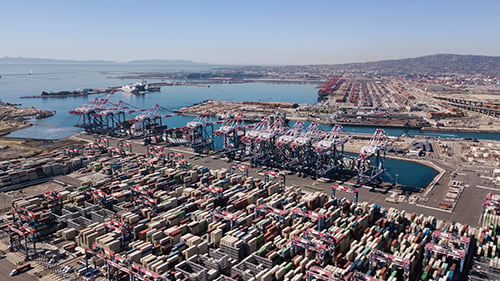
The dream of a modern-day seaport planner is to be handed a greenfield site for which she can design a state-of-the-art container-handling terminal from the ground up. But that’s rarely the case at major port facilities today.
It's definitely not an option at the Port of Los Angeles, the nation’s largest containerport. The port long ago ran out of room to design and build new terminals from scratch. Today, it’s a matter of constantly introducing new ideas and technologies that can boost productivity within the operation’s finite borders.
Even then, the port must take into account certain constituencies who have a much greater voice in development matters than in years past. Chief among them are the local residential and business communities that are directly affected by the traffic, noise, lights and emissions from port activity. And in a broader sense, there’s a raft of ever-tougher rules on environmental compliance, issued by local, state, national and even international regulators, to contend with.
The information required to keep current with those requirements has exploded. “In the 1990s, our environmental documents might have only been a handful of pages — 100 max,” says Dina Aryan-Zahlan, deputy executive director of development at the Port of Los Angeles. “[Today}, our documents regarding testing, evaluation and analysis can be three feet tall.”
Community outreach has also taken on greater importance. In the age of social media and the internet, the port is listening to the concerns of both commercial tenants and local residents, Aryan-Zahlan says. Also in the mix is the requirement to provide public access to portions of the waterfront. The port sets aside 10% of its operating income for that purpose, she says.


